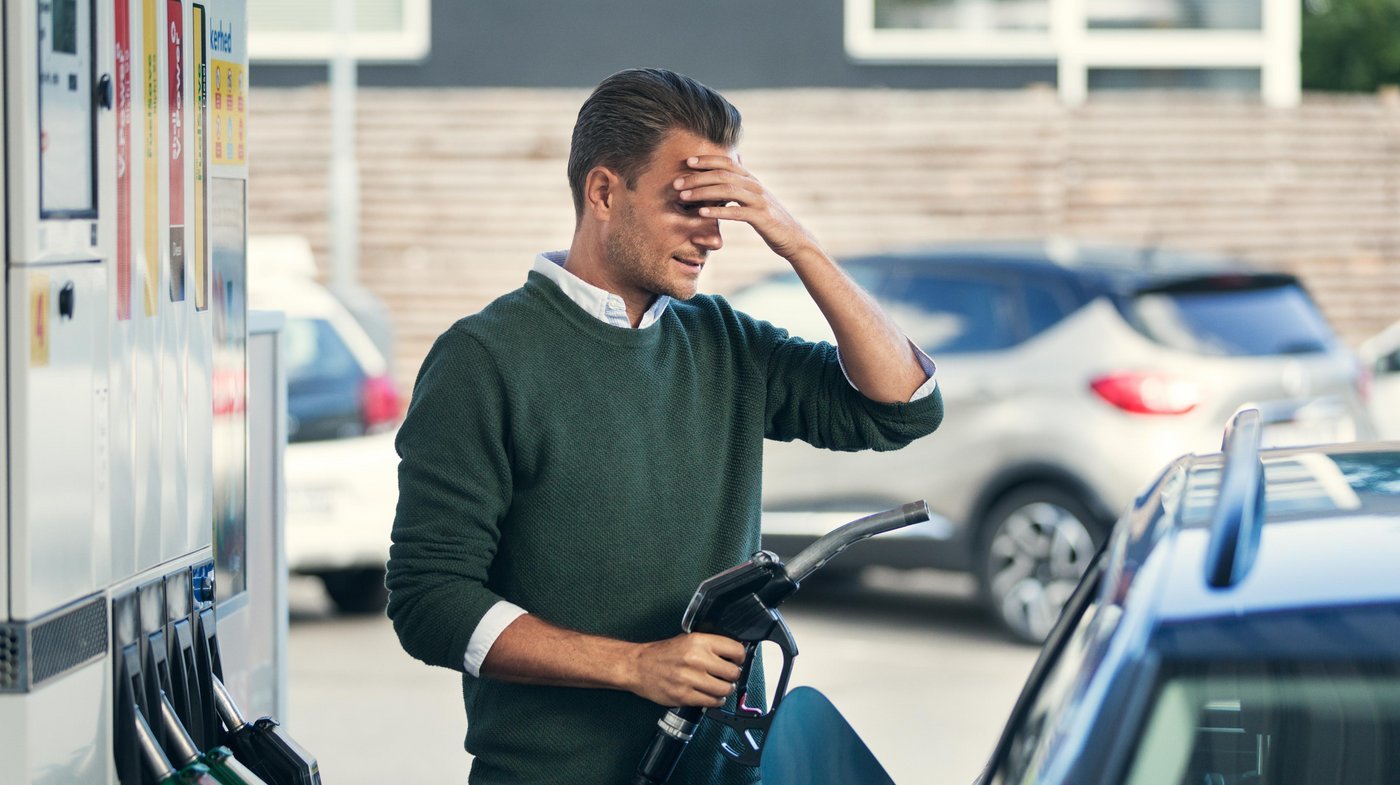As you know, it is the others who have problems with traffic. So if you do not feel taken by the advice, feel free to share this article with others so they can become better drivers. That way, you still get something out of it.
1. We are driving too early
Many people can not wait to get going at all, so they immediately get in the car, start and drive immediately. The price is inferior to safety and comfort throughout the trip.
If you are going to drive for more than five minutes, you should consider taking off your outerwear before you sit down. With seat and cabin heating, the car is quickly comfortably warm, and then you feel more free, while the seat belt can sit optimally close to the body.
Before you drive out into the traffic, you must fasten your seatbelt, set mirrors, steering wheel and seat, and then you should find the right radio channel, check that the mobile is connected to bluetooth, and program the GPS – do not do this while driving.
2. We merge too soon
When a multi-lane road narrows to fewer lanes, many feel that they must enter the continuing lane well before the intertwining. Then they curse all the egotists who drive past in the overtaking lane and push themselves into the grace of others further ahead. And when you finally arrive yourself, you should probably make sure to keep the holes in the queue closed.
The intention to pull in early is probably good, but it is wrong. The lanes are used most efficiently if they are filled up. The intertwining should be done like a zipper where the lanes merge. If everyone agrees, it will be easier for everyone.
3. We park incorrectly
Try to make it a habit to back into the parking lot so that it is easy, fast and safe to get out again. But if you have to back out of a parking space, make a strategy for the maneuver. Walk around the car and look for obstacles that are difficult to see from the driver’s seat and plan which way you want to back out.
When you are still there, place shopping bags and bags in the trunk or on the floor by the back seat so that they do not hit you in the neck in a collision.
4. We choose the golden mean
It is safe to lie in the middle. Perhaps that is why many motorists choose to take the middle lane on the highway. There’s no one in the way, is there? Yes, you have to pull in to the right as soon as there is room after an overtaking.
It provides smoother traffic, greater traffic safety and better use of the road. If you often experience that other drivers push, blink or lie right in the bumper of you, it may be because you meet many idiots. It can also be due to slumber in the wrong lane.
5. We drive too fast – and too slow
If we disregard those who do not bother to comply with the speed limits, then there is also room for improvement in many others when it comes to speed on especially the highways.
Many people drive too slow because they rely on the speedometer. But it usually shows too much – a deviation of as much as 10 percent plus 4 km / h. is legal – so when they think they are driving 110 km / h, then they may only drive 102 km / h. It annoys him who sees the speed of his GPS and sets the cruise control after it, because he has to overtake with a small speed difference.
Also, when we drive on and off the highway, we are often speed blind. When we get on, we prefer to get up to a good braiding speed, and that is what the rest of the traffic drives with – that is 110 or 130 km / h. On the other hand, we often drive from the highway at too low a speed. It should only be lowered when you are in the exit lane.
6. We are thoughtless in thought
First we forget which side of the car the tank connection is in. Then we fill up with the wrong type of fuel. And finally we drive without taking the refueling gun out of the car again.
Okay, very few people do all three things at once, but the first thing happens many times a day, even though the location of the nozzle in many cars is indicated by an arrow at the fuel gauge. The second happens approx. 20 times a day in Denmark, and the too fast pit stops happen about five times a day. This is probably due to distraction, so refuel when refueling.
Afterwards, on the other hand, it is obvious that you just spend a few extra minutes in the pits washing windows and lights, and that you regularly check tire pressure, washer fluid and oil level.
7. We do not brake hard enough
Many have learned that the wheels must not block when emergency braking. But today, the vast majority of cars have anti-lock ABS brakes. Here the pedal must be at the very bottom.
When you do this, the brake pedal may start to vibrate, but you just have to keep pushing. In fact, one should preferably push so hard that the bale lifts itself from the seat. By braking properly, you can shorten the braking distance by many and crucial meters that can save lives or significantly reduce the collision speed.
Practice in emergency braking at a driving facility or a deserted road or parking lot. It feels violent – it has to!
Remember to remove loose objects in the cabin, otherwise you will also learn how dangerous they are in an emergency.
8. We do not hold on to our steering wheel
The seats in modern cars are often as comfortable as an armchair, so what’s more natural than floating out with one arm on the armrest and the other limply resting on top of the steering wheel? But when was the last time you made an evasive maneuver in the TV chair?
When driving, you should have both hands on the steering wheel in the “quarter to three” position – then you are in control.
9. We hold on to our right
The first basic rule in the Traffic Act is: “Road users must act considerately and exercise caution so that no danger arises or damage or inconvenience is caused to others, and so that traffic is not unnecessarily hindered or disturbed”.
The rest of the rules must, of course, be complied with in principle, but everyone can make mistakes. So if you think a little more about “considerate” and “show caution” than about who was right, the traffic would be more fluid, less stressed and safer.
You do not know if it is a completely newly trained motorist or a tourist who fumbles a little in front. Surely it is that the push, gestures or shouts do not help them further.
10. We have not seen the light
Modern cars come with lots of equipment that can make everyday life easier and safer, but it requires knowing that it is there and how it is used. All experience shows that features that are not used during the first weeks you have the car will never be used. Too bad and a waste of money.
For example. one needs to know how the car light works. On some cars, you have to turn on the low beam yourself to get light in the taillights, and you easily forget that if it is fog or rain and not darkness that requires you to have light on.
If the car has cruise control, driving programs (eco, sports, etc.) or the opportunity to listen to music via mobile phone, it is also a pity not to use them. Spend 10 minutes with the manual – it can give you many hours of joy in the future. Or ask the dealer to give you a crash course.
11. We do not blink first
Most people have become accustomed to activating the turn signals when changing lanes on the motorway. The idea, of course, is to inform others that you are changing position on the road. But if it is to work as intended, you must start flashing before turning the steering wheel.
Many first flash while turning or after turning. There it is too late if others are to be able to use that knowledge for something. Look great and blink several times before, during and after the lane change so you know others can see it.
12. We are too low geared
Maybe it’s laziness, maybe we do not know better, but very often we drive in far too low gear. If you have driven a modern car with a gear shift indicator or with automatic transmission, you will probably see that the car “itself” will change gears much earlier and more often than you do.
Especially when the speed “flattens out” at e.g. 80 km / h. on the road, immediately shift to top gear. Then you drive with as few revolutions as possible, and it saves fuel and makes less noise – who can say no to that?
If you do not have the strength to shift as often, you can skip gears during acceleration, so that you e.g. runs in 1.-2.-4.-6. gear. Try to find the gear sequence that best suits your car and your temperament.
13. We drive short term
Superhuman responsiveness does not come with the driver’s license, but we often drive as if it did. The rule of thumb says that “the distance to the person in front must be at least half the speed”, so that the distance is 40 meters at 80 km / h. and 65 meters at 130 km / h. If the line is wet or slippery, something must be added.
And now that we’re looking ahead, take advantage of the long-term vision so you can make reservations about what’s happening further ahead. It increases safety and comfort and lowers fuel consumption if you e.g. rolls forward at red light, fails to accelerate unnecessarily and is free to brake hard. Any passengers are guaranteed to appreciate your ride as well.
Source: fdm.dk




